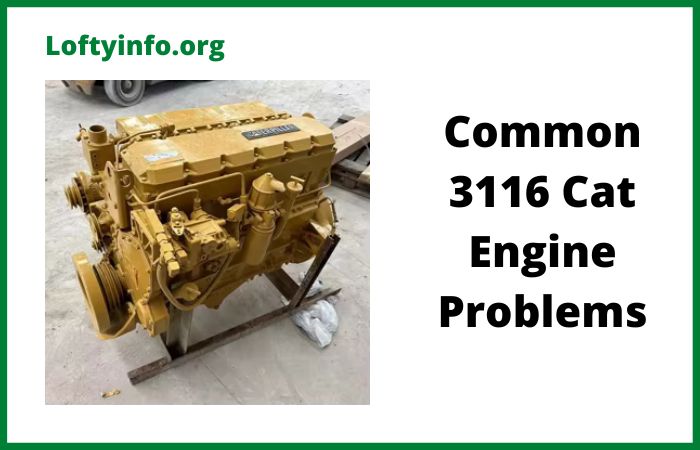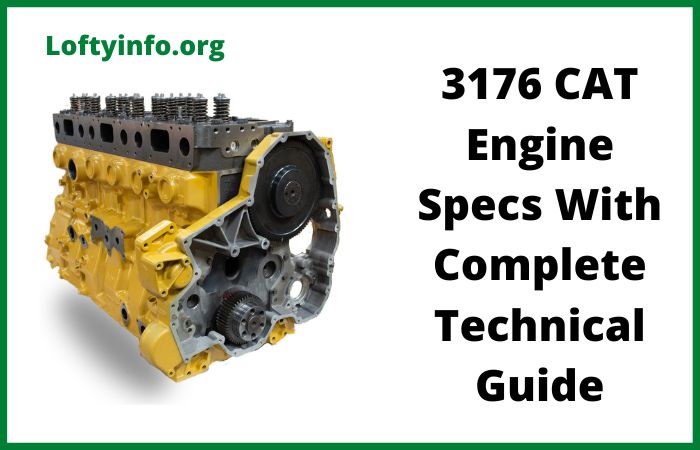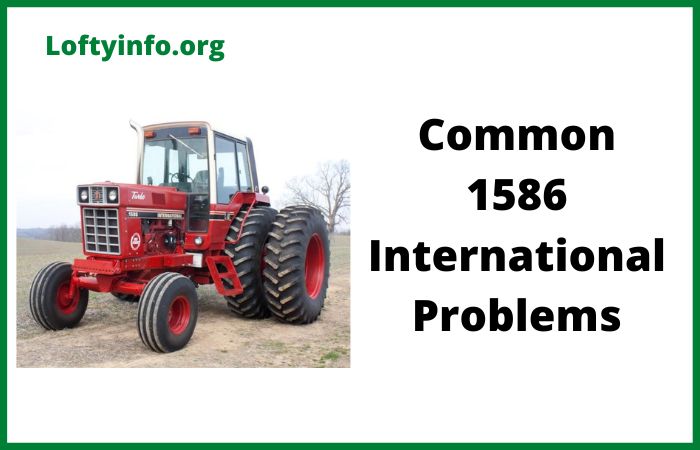Common 3116 Cat Engine Problems: Causes and Solutions
Your Caterpillar 3116 engine suddenly loses power during a critical job or refuses to start on a cold morning.
These scenarios frustrate equipment owners who depend on this workhorse diesel engine for daily operations.
The 3116 has powered countless trucks, buses and industrial machines since its introduction, but like any mechanical system, it develops predictable issues over time.
Understanding common 3116 Cat engine problems helps you respond quickly when trouble strikes.
This inline six-cylinder diesel engine earned a reputation for reliability throughout its production run, yet certain weaknesses appear consistently across different applications and operating conditions.
Recognizing these patterns saves both diagnostic time and repair costs.
Common 3116 Cat Engine Problems
1) Oil Pressure Loss and Bearing Failures
The 3116 engine experiences oil pressure problems that stem from multiple sources. Worn oil pumps represent the primary culprit behind pressure drops.
The gear-type oil pump inside the front cover wears from continuous operation, creating clearances that reduce pumping efficiency. As pump wear progresses, oil pressure at idle drops below the minimum 10 psi specification.
Main and rod bearing wear accelerates when oil pressure falls below required levels. The 3116 uses plain bearings that need constant pressurized oil flow for lubrication and cooling. Insufficient pressure allows metal-to-metal contact that damages bearing surfaces.
A knocking sound from the lower engine indicates advanced bearing damage requiring immediate shutdown to prevent catastrophic failure.
Clogged oil passages and pickup screens also restrict flow and reduce pressure. Sludge buildup from extended oil change intervals or poor quality lubricants blocks the narrow passages feeding critical components.
The oil pickup screen at the pan bottom traps debris but becomes clogged if maintenance lapses.
Check oil pressure with a mechanical gauge connected to the port near the oil filter housing. Compare readings at idle and high RPM against specifications in the service manual.
Readings below 10 psi at idle or 40 psi at rated speed indicate problems. Inspect the oil for metal particles that signal bearing damage.
Replace the oil pump if worn beyond specifications and flush all passages during repair. Always use quality oil filters and maintain proper change intervals to prevent future issues.
2) Fuel System Problems and Injector Failures
Fuel injection issues plague the 3116 engine due to its mechanical unit injector system.
Each cylinder has an individual injector actuated by the camshaft through pushrods and rocker arms. These injectors develop internal wear that affects fuel atomization and delivery timing.
A failing injector produces excessive smoke, causes rough running and reduces power output from that cylinder.
The fuel transfer pump supplies pressurized fuel to the cylinder head gallery feeding all injectors.
When this diaphragm-type pump weakens, fuel pressure drops below the required 50 to 70 psi range.
Low fuel pressure causes hard starting, power loss and excessive white smoke during acceleration. Air leaks in suction lines allow the system to lose prime overnight, resulting in extended cranking before the engine fires.
Contaminated fuel damages injector precision components rapidly. Water in fuel corrodes internal parts while dirt particles score plungers and barrels.
The 3116 fuel system has minimal filtration compared to modern common rail designs, making it vulnerable to poor quality diesel.
Perform a cylinder contribution test to identify weak injectors. This procedure involves disabling individual injectors while monitoring RPM drop to determine each cylinder’s power contribution.
Replace any injector showing significantly less RPM change than others. Test fuel pressure at the secondary filter with a gauge while cranking. Pressure should build to 50 psi within several seconds.
Replace the fuel transfer pump if pressure stays low. Always use quality fuel filters and drain water separators regularly to protect expensive injectors.
3) Overheating and Cooling System Failures
The 3116 engine runs hot compared to modern designs and suffers from overheating when cooling system maintenance lapses.
The thermostat housing and water pump mount on the front cover in a configuration prone to air pocket formation.
Trapped air prevents coolant circulation through the cylinder head, causing localized overheating that warps the head or damages gaskets.
Water pump failure occurs frequently on high-hour 3116 engines.
The bearing and seal assembly wears from constant operation in the hostile underhood environment. A failing water pump bearing creates noise before complete failure while seal leaks drip coolant from the weep hole.
Complete pump failure stops coolant circulation and causes rapid overheating.
The radiator cap and pressure relief system must maintain proper pressure for the cooling system to work efficiently.
A weak radiator cap allows coolant to boil at lower temperatures, reducing cooling capacity. The system operates at 15 psi to raise the boiling point and improve efficiency.
Cap failure also allows air entry that creates circulation problems.
Scale and corrosion buildup restricts coolant passages in the block and radiator over time.
Hard water or incompatible coolant types accelerate deposits that insulate metal surfaces from coolant.
The engine runs progressively hotter as deposits accumulate until overheating becomes chronic.
Monitor coolant temperature closely during operation and investigate any readings above normal range. Purge air from the system using the bleeder valve on the thermostat housing after any coolant service.
Replace the water pump at the first sign of bearing noise or seal leakage. Test the radiator cap annually with a pressure tester and replace if it cannot hold 15 psi.
Flush the cooling system every two years using proper procedures and refill with the correct coolant mixture to prevent scale formation.
4) Valve Train Wear and Adjustment Issues
The 3116 uses a mechanical valve train requiring regular adjustment to maintain proper clearances.
Valve lash changes as components wear during normal operation. Excessive clearance creates noisy operation and reduces valve lift while insufficient clearance prevents complete valve closure.
Both conditions harm performance and can damage components.
Rocker arm bushings wear from constant oscillating motion. The bronze bushings at each rocker pivot point develop clearance that introduces slop into the valve train.
Worn bushings affect valve timing accuracy and make proper adjustment impossible.
A metallic clicking noise from the valve cover indicates excessive rocker arm wear.
Pushrod wear and bending also disrupts valve operation. The pushrods transfer motion from cam followers to rocker arms through a long unsupported span.
Side loading from worn components causes pushrods to bend slightly, changing geometry and reducing valve lift.
Bent pushrods often result from valve train over-speed or interference between pistons and valves.
Camshaft lobe wear reduces valve lift directly. The flat-tappet cam design relies on proper lubrication and rotation of cam followers to distribute wear. Poor oil quality or low pressure allows lobes to score, reducing their profile height.
Worn cam lobes produce low compression and poor combustion in affected cylinders.
Adjust valve lash every 500 hours or whenever noise indicates clearance changes. Follow the proper adjustment sequence in the service manual with the engine at specified temperature.
Inspect rocker arms and pushrods for wear during valve adjustments. Replace any components showing damage or excessive wear.
Maintain proper oil pressure and quality to protect camshaft lobes from premature wear.
5) Electrical System and Starting Problems
The 3116 engine uses a simple electrical system but still develops common problems affecting starting and operation.
The starter motor endures extreme stress during cranking and fails from wear to the solenoid contacts and drive mechanism.
A clicking sound without cranking indicates solenoid failure while slow cranking points to worn motor brushes or bad connections.
Battery cable connections corrode from exposure to battery acid vapors and road salt. Resistance at corroded terminals reduces available cranking amperage. The 3116 requires substantial current to crank, especially in cold weather when oil viscosity increases. Poor connections prevent the starter from receiving adequate power.
The charging system fails to maintain batteries when the alternator or voltage regulator malfunctions.
A weak alternator cannot recharge batteries after starting, leading to progressive voltage decline.
The batteries eventually lack sufficient charge for reliable starting. Belt slippage also reduces alternator output and goes unnoticed until electrical problems develop.
Engine sensors including the oil pressure and coolant temperature sending units fail and provide incorrect readings.
These simple resistance-based sensors develop open circuits or incorrect values that mislead operators about actual engine conditions.
A failed oil pressure sensor might indicate low pressure when actual pressure is normal, causing unnecessary concern.
Load test the batteries and inspect all cable connections when starting problems occur. Clean corroded terminals with a wire brush and coat with protective spray.
Test the starter draw with an inductive ammeter and compare to specifications.
Replace the starter if current draw exceeds limits or cranking speed is inadequate.
Check alternator output voltage at various RPM levels and verify the system maintains 13.5 to 14.5 volts. Replace failed sensors to ensure accurate monitoring of engine conditions.
Frequently Asked Questions
What causes white smoke from a 3116 Cat engine? White smoke typically indicates unburned fuel from injector problems, low compression or cold operation. Check injectors first and verify proper fuel pressure.
How often should valve lash be adjusted on a 3116? Adjust valve clearances every 500 operating hours or when excessive valve train noise develops during operation.
Why does my 3116 lose power under load? Power loss usually stems from fuel delivery problems, air restriction, turbocharger issues or advanced injector wear reducing fuel atomization.
What oil pressure is normal for a 3116 engine? Oil pressure should exceed 10 psi at idle and reach 40 to 60 psi at rated engine speed when fully warmed.
What makes an inverter fuse to blow often
How luminous inverter 1650 overload problems and solutions happens



